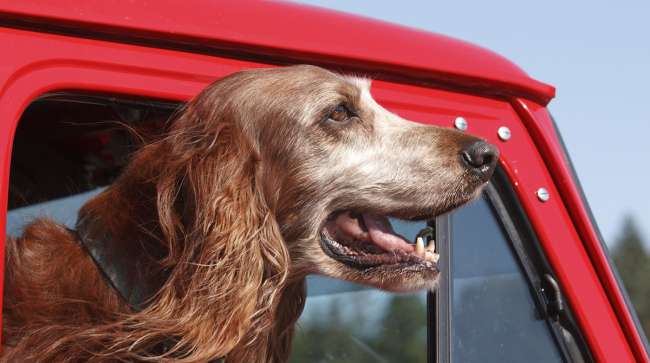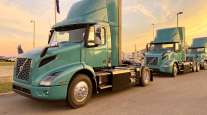Features Editor
The Dog Days of Maintenance and Emissions Alphabet Soup

As the well-known saying goes, dogs are man’s best friend. That sentiment certainly can apply to truck drivers who bring their pets on the road, but these canine companions also may bring some of the hairiest of challenges for the maintenance manager and truck technician.
One of the cover stories in this issue of Equipment & Maintenance Update explores a few atypical repair challenges some maintenance shops have encountered with trucks, including those derived from pet hair.
Some fleets and motor carriers may allow their drivers to take their pets on the road to keep them company on long hauls. But shedding from pets, which may include cats, could lead to some unexpected truck maintenance problems.

Lysiak
Ross Hoover, director of service at Summit Truck Group, a Lewisville, Texas-based dealership, said he’s seen animal hair cause filter problems much sooner than one normally would anticipate.
“If a truck is pretty new, you rule out that a filter is plugged up, but when you start to diagnose why a filter isn’t working, you’ll see it is covered in pet hair,” Hoover said in the story.
For maintenance managers who want to learn more about these and other unusual situations, and their causes, this story is a must-read.
On the opposite end of the spectrum are the more common and perhaps now-notorious challenges that fleet maintenance managers and technicians have faced for more than a decade: those related to the technology, equipment and devices that make up what I dub the alphabet soup of diesel engine aftertreatment systems. That’s the focus of the other cover story in this issue.
You know what I’m referring to. There’s EGR for the technology known as exhaust gas recirculation to reduce emissions of NOx. Then there’s the DPF, which stands for the diesel particulate filter, the device designed to remove diesel particulate matter or soot from the exhaust gas of a diesel engine. Finally, I can’t forget about SCR, which is shorthand for selective catalytic reduction, introduced in 2010.
As the story notes, a recent news event served as the latest reminder that manufacturers may continue to face technical challenges as they comply with emission-reduction mandates.
That event was in July, when engine maker Cummins Inc. announced it would voluntarily recall 500,000 model-year 2010-15 medium- and heavy-duty trucks to replace a defective catalyst in the emissions control system, Transport Topics reported.
Specifically, the defective part in the SCR system degraded too quickly, the story in this issue reports.
Meanwhile, fleets continue to face their own difficulties with aftertreatment systems that are now being refined after major changes in past years.
On the bright side, some positive developments are underway with these engine emissions-reduction systems, as the industry gears up to comply with the 2021 greenhouse-gas emissions update.
And FYI, you should read this story ASAP to find out what these developments are.
There, a little alphabet soup of my own.




